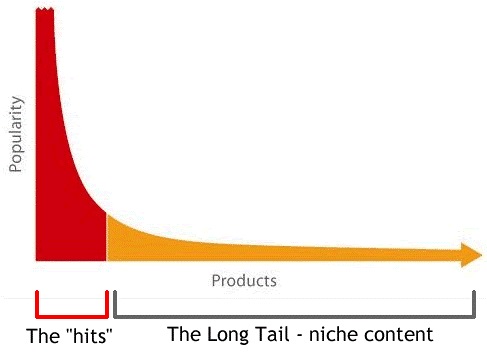Are you thinking about taking on Amazon and building a multi-vendor site that can take them down and turn you into an international brand and a household name? You’ve come to the right place.
Do you need to build an ecommerce store, update or make a new extension? We can help!
First thing’s first, though – you need to make sure that it’s truly what you want and where your passion lies. Don’t just take it from us – take it from the man himself.
Jeff Bezos, Amazon’s founder and the world’s wealthiest person as of the start of 2021, explained, “One of the huge mistakes that people make is that they try to force an interest on themselves. You don’t choose your passion; your passion chooses you.”
And so the first step is to figure out whether taking on Amazon is really where your passion lies or whether you’re just chasing the money. And if it is and you’re committed, the next step is to get to know the competition.
What Do You Need to Know about Amazon?
Amazon first got started back in 1994, when Jeff Bezos found that there was a gap in the market. He realized that the five-year-old World Wide Web offered a vast amount of opportunity for those who were willing to take it.
At the time, Bezos was working as VP of D. E. Shaw and Co. on Wall Street. But he knew that that was small fry compared to the rewards on offer. He quit his job and moved to Washington, and it was there that he started to work on his new business.
The company was initially called Cadabra, but a lawyer thought Bezos had said “Cadaver” and decided to go with something different. That’s when he chose Amazon, reportedly because the name comes towards the start of alphabetical lists. The story goes that: Bezos flicked through a dictionary and liked the name Amazon because it was exotic and different, with connotations linked to the world’s biggest river. The Amazon smile logo is also able to subtly point from A to Z, as shown below.

Amazon is a classic example of that old startup story of a world-beating website starting out of someone’s house, although this time, there were no basements or garages involved. Most people associate the site with books because they started with it, but it could quite easily have been anything else.
When he first started, he read a report that predicted a 23x annual growth in ecommerce. Bezos drew up a list of twenty different product types that his new site could specialize in, including CDs, software, and videos. He settled on books in the end, but it was something that was still on his mind because Amazon became known for selling a little bit of everything.
How Does Amazon Make Money?
Amazon makes money has changed significantly since they first started, but a general concept still holds true. The idea behind starting with books was that there’s a huge number of books available and that they have a relatively low unit cost, meaning that they could be sold cheaply while still making a profit.
For Amazon, it’s all about the long tail. The idea behind the long tail is that while the top 20% of products might account for 80% of sales, there’s still a hell of a lot of money to be made on that final 20% - and the competition is a lot less fierce, too.

Amazon began with making money on the long tail of books. But it wasn’t long before they moved on to other products, including the CDs and movies Bezos had been considering when he first started out. The way that Amazon makes money off the long tail holds across all of its product categories, and not just for books.
But it’s not just the physical sales where Amazon makes money. In recent years, they’ve made a ton of money from their Amazon Prime model, including everything from free next-day delivery (at a premium fee, of course) to access to Amazon’s streaming services. They’re investing so heavily in streaming content that they’re currently working on a five-season Lord of the Rings show that’s set to be the most expensive TV show ever made.
What Can You Learn from Amazon?
There are a few lessons on offer courtesy of Amazon, and some of them are more useful than others. One of them is that it’s super helpful to have investment capital from the get-go, which is why Bezos convinced his parents to invest nearly a quarter of a million dollars in the company. Unfortunately, not everyone’s parents have access to that kind of cash.
We can also learn from Amazon’s long-tail strategy and attempt to emulate that. If anything, that’s even more important now that Amazon itself has a stranglehold on the market. You’re not going to be able to beat them on the short tail, and so you need to find yourself a niche market that you can dominate, just like Amazon did with books.
Amazon also found other ways to diversify its product range, most notably through mergers and acquisitions. They bought CreateSpace, a self-publishing outfit, and later turned it into Amazon KDP and Amazon ACX for audiobook production. This is another twist on the long tail approach. Cause it allowed them to take a cut from all of the sales that the hundreds of thousands of indie writers made.
And they’ve continued to innovate in other ways, too — for example, their Amazon Go. The system is designed to be used in retail settings and uses cameras to detect when people take items off shelves and automatically charge them.
The big lesson here is that stagnation is death, and Amazon knows that better than anyone. They took advantage of the stagnation of other companies to build their business in the first place. They also saw that DVDs and Blu-Rays were losing ground to streaming services, so they launched Prime Video to stay competitive.
Innovation and evolution are essential, but they also take money. If you want to learn from Amazon, it’s a good idea to save a certain amount of your revenue to reinvest it into innovation and R&D.
What Do You Need to Start Your Own Amazon?
Well, a time machine would be useful.
But in all seriousness, while Amazon might have been in the right place at the right time, many other elements also come into the mix, which helped them become a dominant force in the ecommerce industry.
So if you’re looking at building your own Amazon killer, a few of the factors that you’ll want to think about include:
- Niche: You can’t be everything to everyone, and even Amazon isn’t quite able to do that. Specialisms and finding a place mean that you don’t need to try to be better than Amazon at everything. Instead, you can win out in a single niche by becoming the go-to store for movies or vegan food.
- Domain Brand: Your domain name is the address people enter into their web browsers to navigate your website. Amazon, for example, uses Amazon.com as well as regional domains such as Amazon.ca and Amazon.co.uk. Your domain name needs to be easy to remember and hard to misspell.
- Hosting: Your web hosting provider is an important choice because not all hosts are created equal. Some specialize in speed, some in security, and some in catering to huge amounts of traffic at an affordable price. Others will offer a mixture of all of them. If you're looking for a cost-effective solution, consider exploring free VPS options to meet your hosting needs.
- Design: Here, we’re talking about the look and feel of your website. The way that your website looks and feels can make a huge difference to the way that people perceive your brand. Your core design needs to look great, but you also need to test it regularly to see if minor changes can boost your conversion rate.
- Ecommerce Platform: There is a range of different ecommerce platforms available to aspiring Bezoses, but arguably the single best choice is to go with Magento. It’s easy to customize and offers a decent amount of functionality as a default.
- Web Development Team: Your design team is responsible for the look and feel of your website, but it’s the development team that will be in charge of building the thing. As well as bringing the designs to life, they’ll also build out functionality and cover how web browsers interact with the site’s database.
Cost to Develop a Multi-Vendor Marketplace Like Amazon
This is one of those “how long is a piece of string” questions that don’t have an easy answer.
The truth is that you can build a multi-vendor marketplace using free ecommerce tools, although you’ll have to factor in the amount of time that it will take you. Nothing comes for free in this world, even when you’re using free tools and investing only your own time. You are still paying with your time.
Then there’s the fact that you can build a multi-vendor marketplace on the cheap. It’s just that if you actually want to take on Amazon and come out on top, you’re going to need something a little bit more advanced than the core functionality.
That’s because every time that you want to develop your own functionality, you’re going to have to find a developer who can take on the job for you. This is especially true if you’re looking to provide self-service tools for vendors so that they can list products themselves instead of having to go through your sales team.
It’s the custom functionality that will set you back the most. And so, you’ll want to prioritize accordingly and create a short detailed explaining what you expect at each phase of the website’s development. You’ll then be able to put your brief out to tender to several different developers and development agencies and start to get some quotes.
It really all comes down to how much you’re willing to spend and how much you value new functionality. Especially in the early days, it might not be worth investing heavily in the site’s infrastructure until you know that there are features that you need.
So how much does it cost to develop a multi-vendor marketplace like Amazon? Anywhere between nothing and a billion dollars. The more important question is the one that Marlon Brando asked in The Wild One when someone asked him what he was rebelling against: “What’ve you got?”
Let’s Make Money Together!
Now that you know the basics behind building a multi-vendor site like Amazon, it’s over to you to get started on making your new website a reality. The good news is that with the tips, tricks, and advice that we’ve shared today, you’ve got a solid foundation to build upon.
No one can do your job for you, and so you can’t expect someone else to build your Amazon killer for you. With that said, that doesn’t mean that you can’t get some help along the way. It’s a good idea to find yourself a mentor if you can because you can learn from their experience and ask them for their advice when you find yourself struggling or in over your head.
You also need to know when to outsource the tasks that you’re unable to take on yourself. One of those tricky tasks is web development, which is why it’s worth reaching out to us here at Zfort Group. We’re more than happy to help you develop your multi-vendor site like Amazon, and we can’t wait to hear from you!
Do you need to build an ecommerce store, update or make a new extension? We can help!





